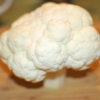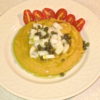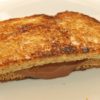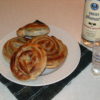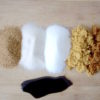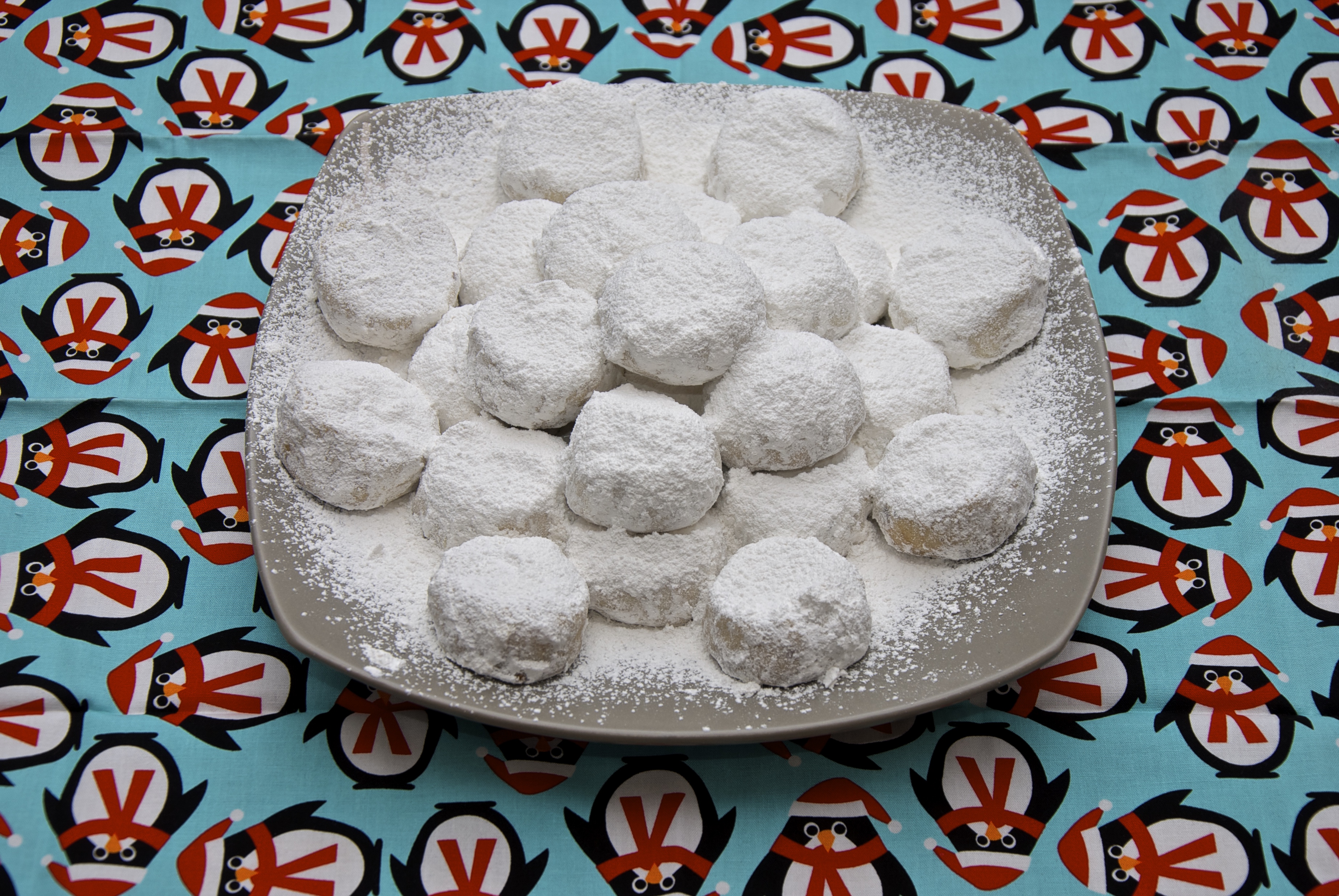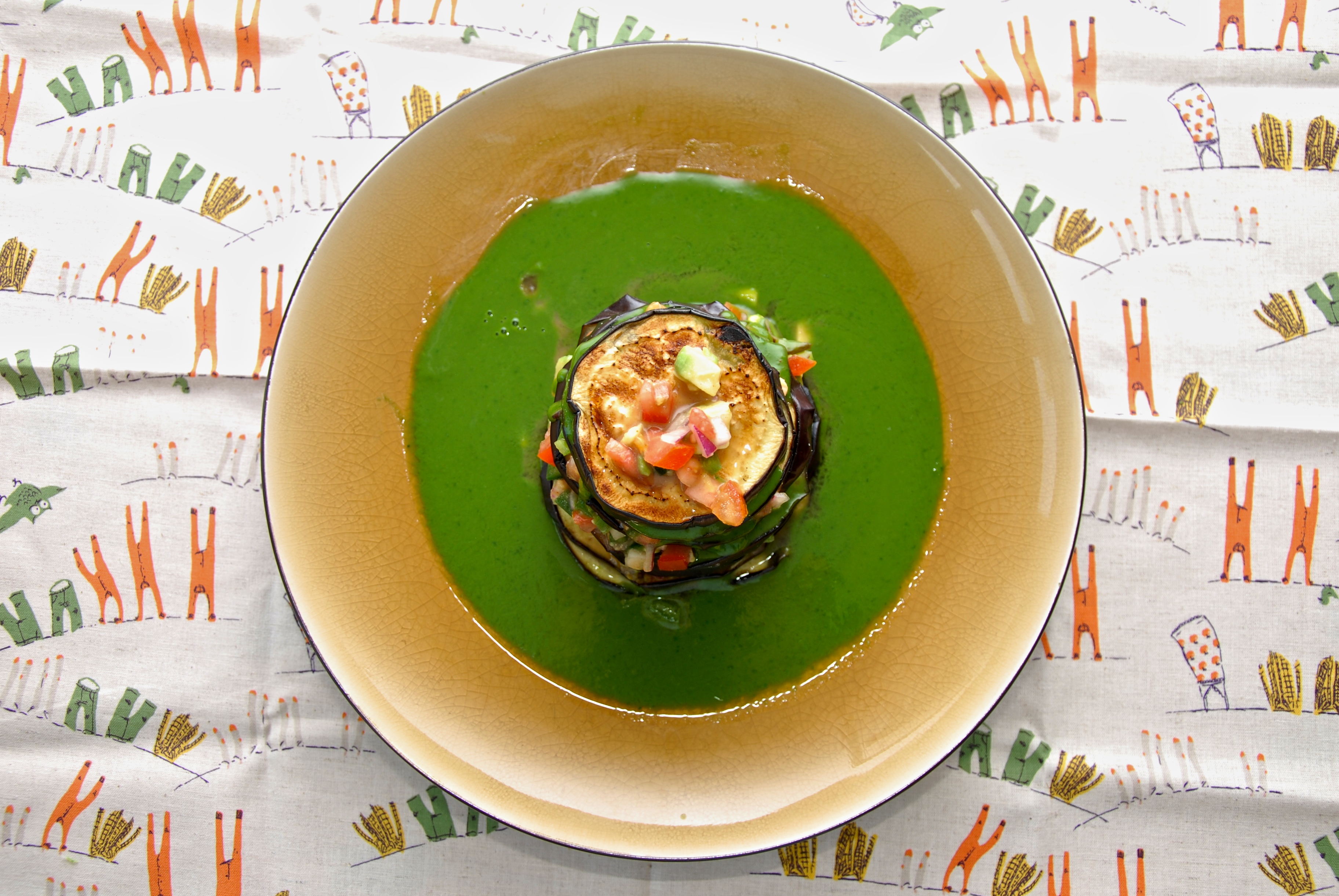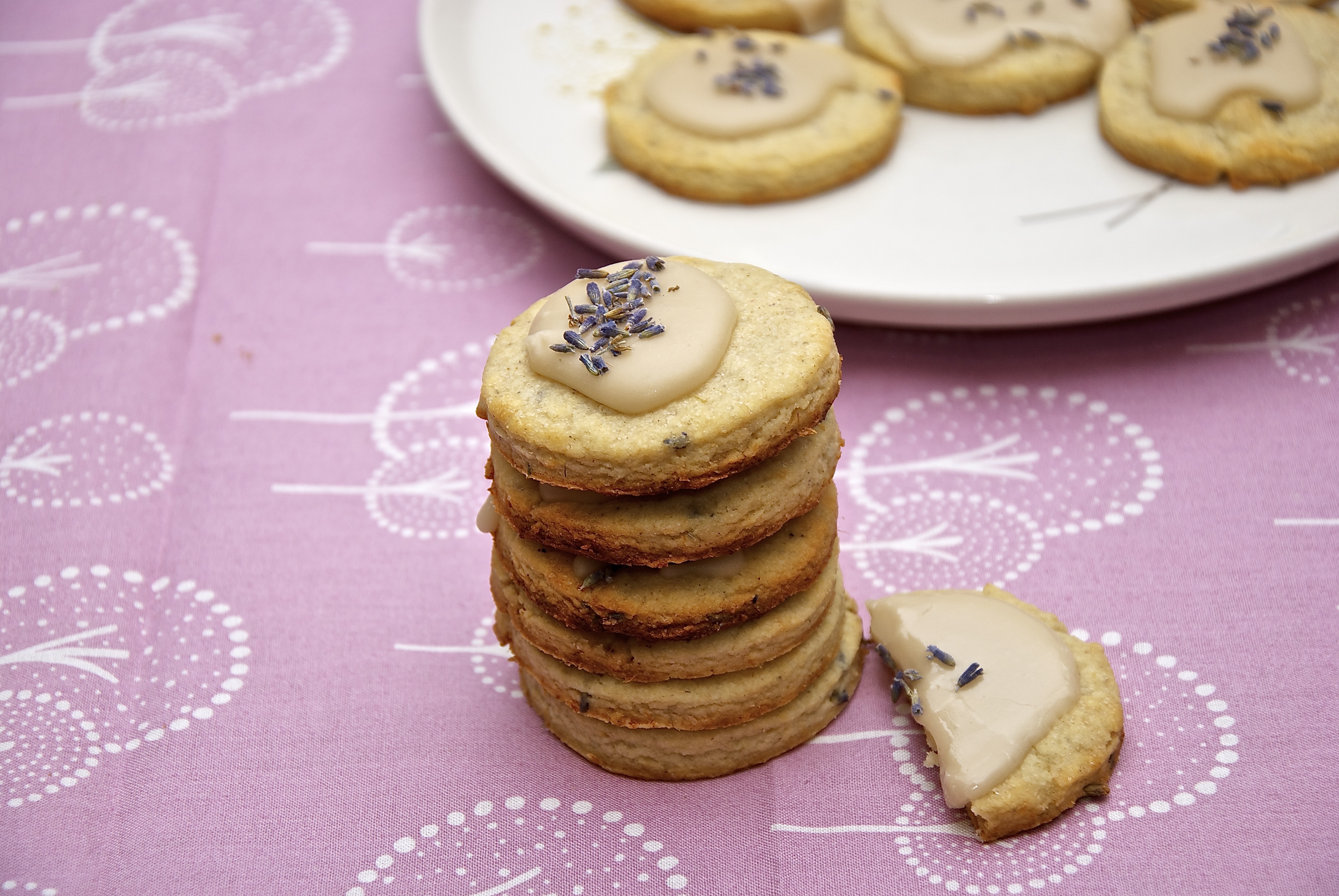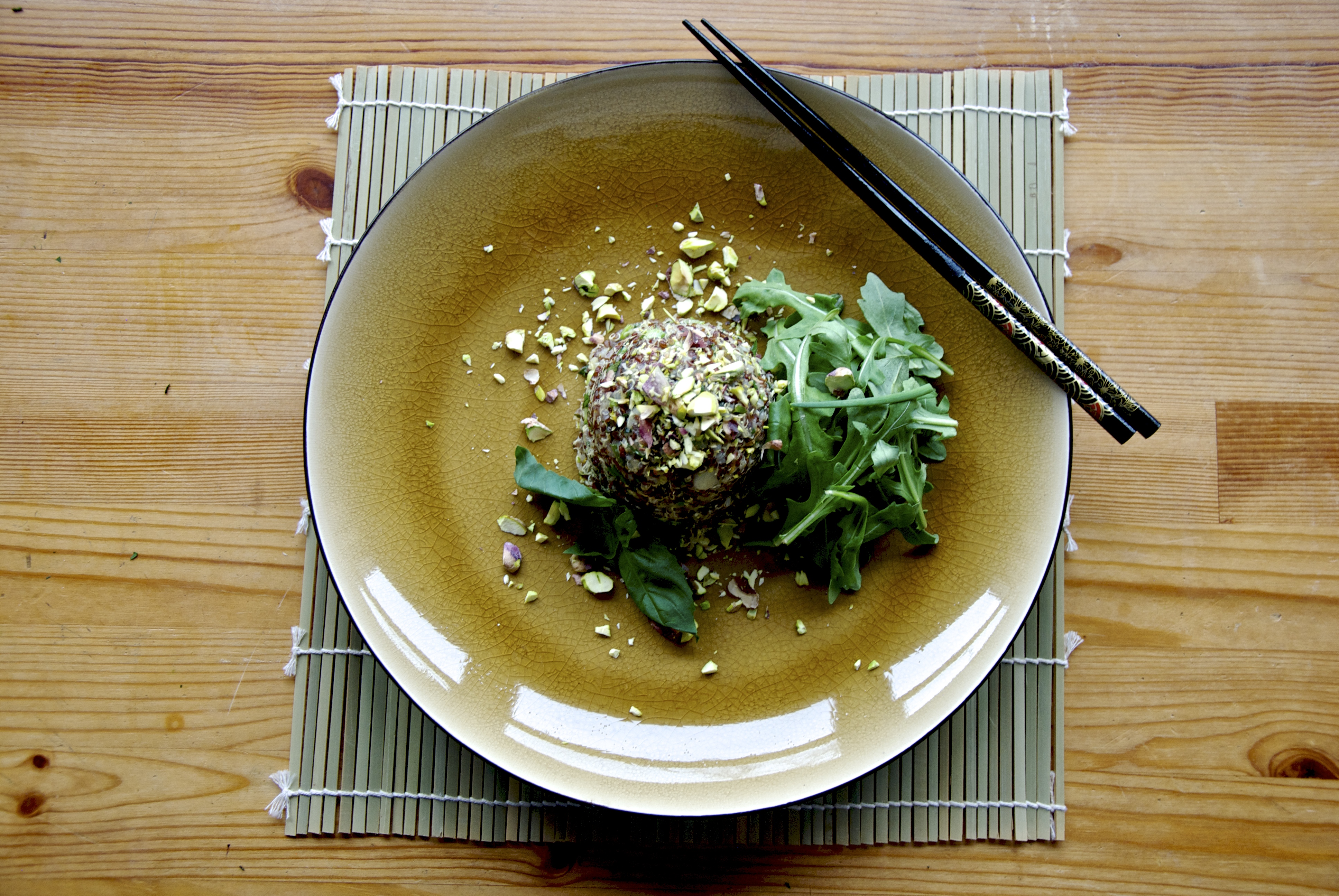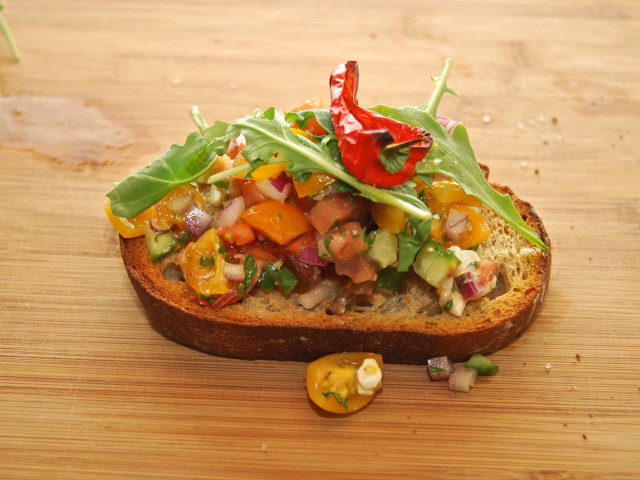
Bruschetta has been in the italian culinary dictionary for nearly 6 centuries as it was first appeared in written in the beginning of the 15th century. It was initially a bread contraption made with the leftover bread of the previous days in a way to utilize leftover heat of the fire and had maximum five ingredients: bread, olive oil, garlic, salt and paper smile as this. Roast the bread until it becomes golden brown and then mince some garlic, pour some olive oil, and season with salt and pepper. With the time going by, there were some more ingredients added, some tomato maybe some basil, but always made simple.The italian immigrants brought that neat, simple fast recipe with them across the atlantic. Here it had to adapt to local ingredients and integrate influences from other cuisines. Soon after, cheese was added, peppers, maybe some more veggies, even ground sausage. With the end of World War II when pizzerias start emerging based on that the garlic bread was made. Again, although different in ingredients similar in principles; the garlic bread shared many of the fundamentals of the bruschetta. It was made with the leftover pizza dough, with some oil and garlic added to it (or butter for a more americanized adaptation). Bruschetta was recently rediscovered as an italian classic, but sadly enough it is not made in its classic form anymore. The name came to signify a process rather than a recipe. A crusty bread, baked on coal or oven, topped with an assortment of… topics. In this context I am making a bruschetta but really I am making a crusty bread, sliced, baked on coal or oven, topped with an assortment of… topics. Never the less and beyond of every technicality, it is quick, fun to make and fun to eat appetizer that can set the right mood on a hot summer noon, or a cool breezy summer night.
As you probably noticed on the title next to the bruschetta is a question mark. Why? Because I think that in the melting culinary pot in america many cuisines were merged, fused, combined and unavoidably either lost their origin meaning or got a load of new ingredients, that changed drastically their appearance and flavor profile. Bruschetta has been in the italian culinary dictionary for nearly 6 centuries as it was first appeared in written in the beginning of the 15th century. It was initially a bread contraption made with the leftover bread of the previous days in a way to utilize leftover heat of the fire and had maximum five ingredients: bread, olive oil, garlic, salt and paper smile as this. Roast the bread until it becomes golden brown and then mince some garlic, pour some olive oil, and season with salt and pepper. With the time going by, there were some more ingredients added, some tomato maybe some basil, but always made simple.
The italian immigrants brought that neat, simple fast recipe with them across the atlantic. Here it had to adapt to local ingredients and integrate influences from other cuisines. Soon after, cheese was added, peppers, maybe some more veggies, even ground sausage. With the end of World War II when pizzerias start emerging based on that the garlic bread was made. Again, although different in ingredients similar in principles; the garlic bread shared many of the fundamentals of the bruschetta. It was made with the leftover pizza dough, with some oil and garlic added to it (or butter for a more americanized adaptation). Bruschetta was recently rediscovered as an italian classic, but sadly enough it is not made in its classic form anymore. The name came to signify a process rather than a recipe. A crusty bread, baked on coal or oven, topped with an assortment of… topics. In this context I am making a bruschetta but really I am making a crusty bread, sliced, baked on coal or oven, topped with an assortment of… topics. Never the less and beyond of every technicality, it is quick, fun to make and fun to eat appetizer that can set the right mood on a hot summer noon, or a cool breezy summer night.

So here is the list of the ingredients for this version, or variation. As I said there is no fixed recipe. So I am listing here what I used with a small explanation, but any vegetable will do.
- A good freshly baked crusty bread. Any type will do, but I tend to favor the sourdough due to the tang it brings to the party. Also it has a somewhat irregular structure that allows for big air pockets. When baked it gives more crunch.
- Tomatoes: You can certainly go with a classic tomato, but again I find that small cherry or heirloom tomatoes and a kumato (mexican brown tomato) or a mixture of the aforementioned varieties is the most interesting choice.
- Peppers
- Cucumbers
- Onions: Any tipe will do, but certainly the red or even a shallot will definitely do better at least color wise.
- Herbs (here just some curly parsley
- Some cheese: Tradition dictates we use mozzarella the quintessential italian cheese, but first this is not a typical bruschetta neither I am italian. So Feta cheese will have to do it. Besides, I find that mozzarella has a very nice buttery flavor but weak, that cannot stand up to the bite of the onions nor the sweetness/tartness of the tomato.
- Some arugula for the spiciness and the peppery bite.
- Olive oil
- Salt

Start with the bread preparation. This is a nice sourdough, whole wheat bread from my neighborhood bakery.

With a good serrated knife remove the first couple of inches as they are too narrow. The end of the bread is what we used to fight with in Greece with my cousins. We used to hollow it out and add olive oil. There is nothing better than that. Nothing!

Continue slicing it up into 1/2 inch slices and you have the beginning of all greatest things: sliced bread.

Now lets work on the peppers.

Cut them lengthwise.

Try to leave the stem on, and if you can split it so both halves have a little bit of a handle.

With a small knife remove the seeds. With out cutting the stem part.

Place peppers and bread in a sheet pan.

Olive oil up the bread and the peppers.

Season with some salt. Bake in a 350 F oven until the bread becomes golden brown and the peppers char on the edges and shrivel up a bit.

Now the tomatoes. The more colorful they are the prettier the dish will be. Cut them in small pieces. I have developed an algorithm for that.
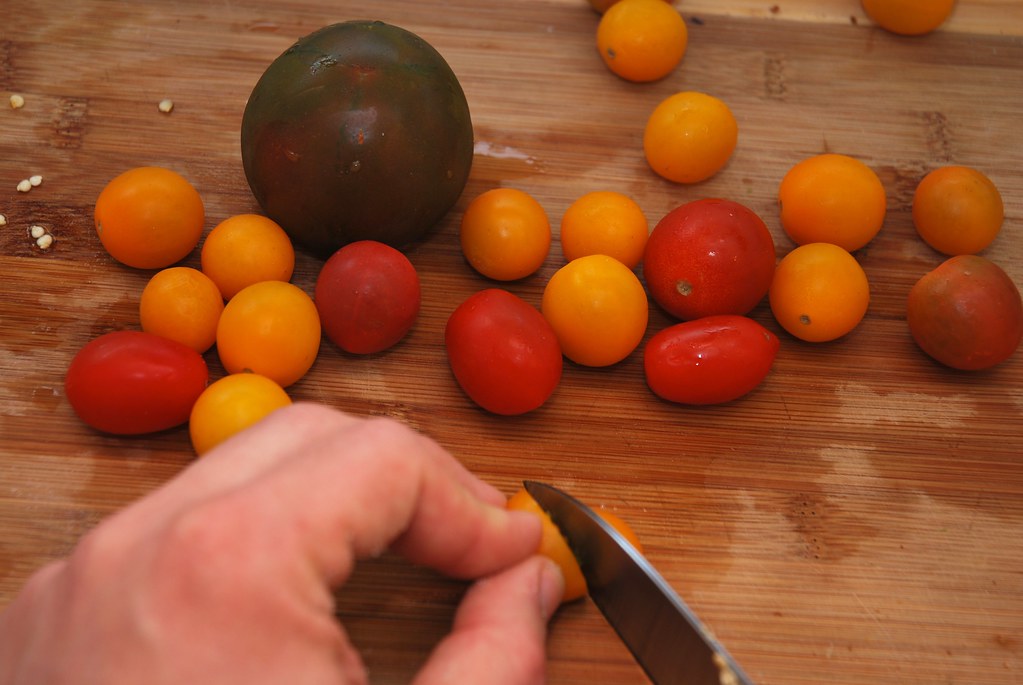
First in half.

Then each pieces in three (or four for the bigger tomatoes). No need for evenness but the closer they are the better it is.

This is what I am talking about.

The kumato will have the 3D method. First cut in half so you get stable pieces to work with. You need a very sharp knife that will go through the skin, without moving the pieces too much. There are some tomato knifes that can certainly do the job, just be aware that they are serrated and they never come with full contact with the surface. So you will need to slice fully to get to cut the tomato. Truth be told any sizable serrated knife will do.

Then cut parallel to the board. This is 1-D.

Then vertically along the length of the tomato (by length we mean from the stem end to the other end). This will by 2-D

And finally to vertical to the board parallel to the equator. In the restaurant business they call this dicing. I call it a well engineered method that results in portions of equal dimensions and uniform shapes.

Now scoop everything in the bowl. In the past I have used my knife to do that. The last few posts however I have used a most professional method. A scoop. Knives are sharp and can injure you. They never have enough area to hold everything and they lack the back raised edge that acts as a lip to hold the food. For all these reasons I have switched to this scoop.

Add everything to the bowl.

Now lets work on the cucumber.

I start by removing the ends. One has the stem and the other one just is tapered making for a less uniform cut. But it is up to you use the entire thing if you want.

Half it length wise.

And give it the 3D treatment. In these small cucumbers there is not need to take the seeds out they are so small.

Now repeat with the onion. Remove the root part but live some of it there to hold the layers together.

Again as before cut lengthwise.

And give it the 3D treatment. Since the onion has a series of concentric layers don’t cut all the way to the end. Leave about 1/4 inch at the unsliced to hold things together.

Everything goes to the bowl.

Just keep in mind to keep an eye on the baking bread and peppers.

No I give the random treatment to the parsley. Curly parsley. It’s more fun.

What is the random treatment? Do you remember the 3D treatment? Arrange carefully drawn cuts at certain distances? This is the exact opposite. You rock the knife and you randomly cut the parsley in fine pieces.

The 3D treatments also goes in for the feta cheese. Feta is a reputable cheese for its crumbly ability. That is because nobody ever tried to cut it. It cuts so fine and precise that is actually a putty not to cut it.

Start with thin slices and stacking them up for the 3D cutting.

Like this.

Now everything joins the party. And because the bowl I chose was not big enough I had to switch. This is what I meant by right bowl.

Toss everything to mix them up.

Add lots of olive oil.

And salt.

Let the bread brown on one side and slightly crisp on the other. Let it cool on a rack so it will remain crisp.
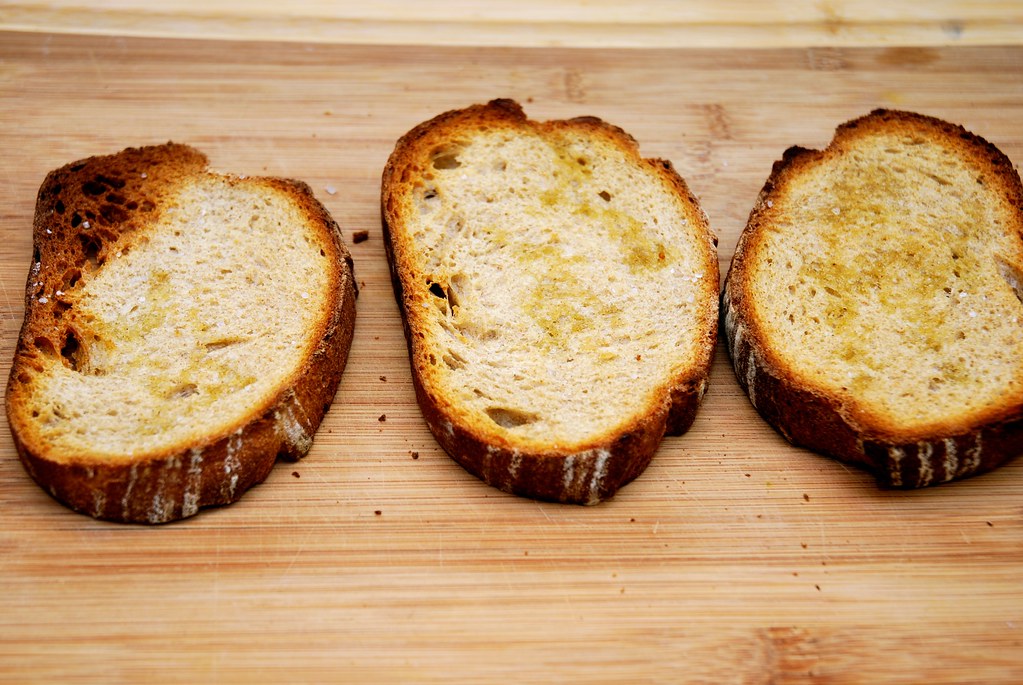
Turn it on the other side add some olive oil. And start building the bruschetta.

Add the veggie-cheese mix. We add everything on the crisp but not brown side. And there is a reason for this. The juices will make the bread a little soggy. The less town side has larger ability to adsorb the juices and by having the be won side underneath we preserve the crispiness that is one of the most sought after features of the bruschetta.
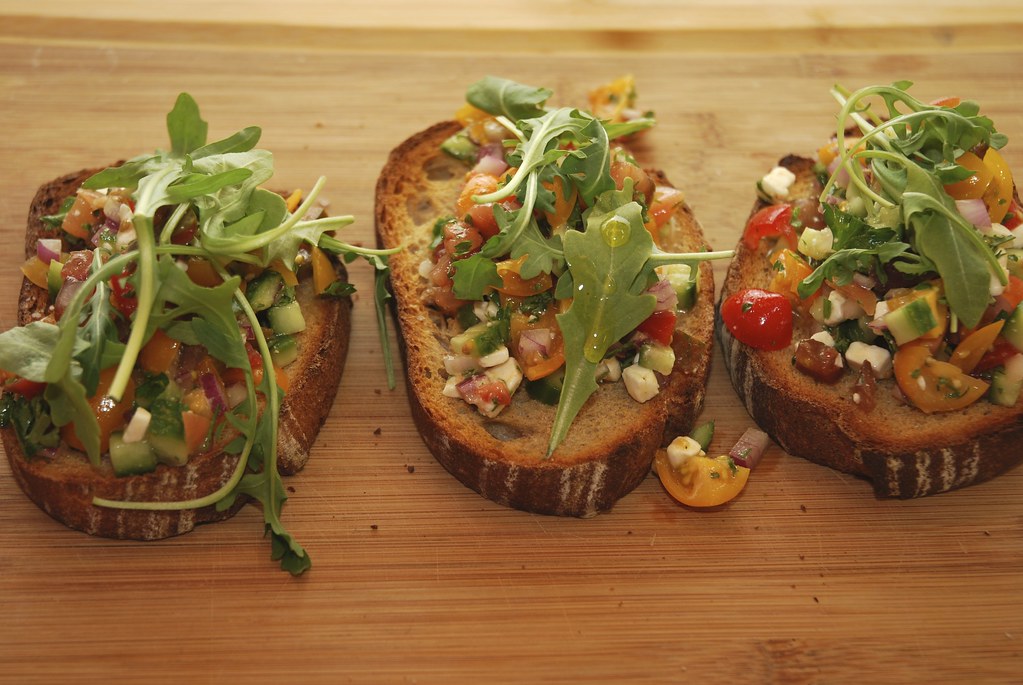
Follow that with a few leaves of the arugula and some olive oil drizzled on top.

And finally top it of with the roasted peppers.

And there you have it. And amazing summer food enough to get the party starting. It is great on its own or paired with a nice white wine. Not too dry not too sweet.
Printable Recipe Card
Bruschetta is a charcoal broiled piece of bread that can carry anything on top. Here we just put a piece of the Mediterranean right on top.
Ingredients
-
1/2 lb of sourdough bread
-
1/4 lb bell Peppers
-
1 lb of heirloom tomatoes
-
2 mini cucumbers
-
1/2 red onion
-
Curly parsley
-
1/4 lb Feta cheese
-
Arugula
-
2 tbsp Olive oil
-
Salt
Directions
- Cut the bread in 1/2 inch slices.
- Spread some olive oil on both sides and but it under the broiler.
- Chop all the vegetables in a fine dice and mix everything in a bowl.
- Cut the feta also in a very small fine dice.
- Add the feta with in bowl.
- Add the olive oil.
- Scoop some of the mixture on top of every slice.
- Decorate with the arugula.
Tips
- If you have access to a charcoal grill use that one to cook the bed.


